Reviews
now browsing by category
Hard Reads
Free literature dissertation idea for whoever wants it: A comparative analysis of contemporary women authors who re-tell classics. The textual pairings Joseph Conrad’s Heart of Darkness and Ann Patchett’s State of Wonder, Goethe’s Faust and V.E. Scwab’s The Invisible Life of Addie LaRue, and Charles Dickens’ David Copperfield and Barbara Kingsolver’s Demon Copperhead. It is a rich set of texts and stories, because Patchett and Schwab fully embrace the gender swap. Not only do the central characters of the story become women, the stories themselves are rooted in the needs and concerns of women. Kingsolver takes a different approach. She retains the gender of the central character, but repositions the story in contemporary Appalachia. Gender issues circulate throughout the story, but are secondary to issues of poverty and addiction.
Last year, I joined/helped form a book club for women academics at my work. There are relatively few of us, and it was an attempt to build and strengthen our connections. Generally, I’m a bit skeptical of book clubs, and stick most closely to my “Not a book club” reading discussions with my friend DJ Librarian. This one has gone very well, though. We’ve made it through the first round of everyone picking books and there was only one dud. Even the person who picked it was underwhelmed. Right now, it’s mostly fiction and pretty light. I listen to many of the books or try to get them on my kindle, but I miss having a tactile book when everyone else is paging through theirs. What I have learned from this experience is that the founder of the book club has excellent taste in reading material. Outside of bookclub, I’ve read several books she’s recommended and all have been great. She recommended Demon Copperhead to me and called it life changing. It wasn’t life changing for me, but Demon Copperhead is a really great book.(Discussion of the books larger trope ahead, but I’ll try to avoid real spoilers.)
It was the hardest book I’ve listened to in a long time. Normally, once an audio book hooks me, I plow right through it. I’ll listen 7-8 hours a day as I do chores around the house and take breaks to play mindless phone games or scroll through social media. A 20+ hour book will sometimes take me a week, sometimes just 3 or 4 days, depending on when I start it and how much I listen during the week. Demon Copperhead is a 21 hour listen that took me at least three weeks to finish. I had to take breaks. I had to skip one part, because I knew what was going to happen and could not witness it; and, the part I had to skip came well before the character descended into a opioid addiction that felt all too real and familiar.
In one of the lighter books I’m reading for book club and to recover after Demon Copperhead, a mother and daughter are talking about another person who lives in their building. The mother explains that the other woman, “…wasn’t always like that. She’s just … lonely.” The daughter says she has her husband, implying that the woman cannot be lonely with someone else around. The mother says, “There are many ways of being lonely, darling.” What makes Demon Copperhead so good and so difficult for me is that Kingsolver captures the all the complicated loneliness of opioid addiction. The loneliness of the addict. The loneliness of living with an addict. The loneliness that creeps into the families and communities surrounding addicts.
I didn’t entirely know about the addiction storyline in Demon Copperhead. Given what I knew of the book, I suspected there would be one, but I felt ready to face it. I did okay for the first two thirds of the book, and it wasn’t actually the addiction that made it so hard for me. It was the loneliness. She captured what it is like to be next to someone who just isn’t there. What it is like when the person you love, who once loved you, and who you think should be most able to see you clearly, no longer sees you. When the person you loved is only ever physically present, never fully participating in the life you’d tried to build together.
Hanif Abdurraqib has a simple, haunting, black and white sign in his house. The white frame surround a black backdrop, with white text that looks like those old building signs that allowed you to push in and pull out the letters to change the information. I know about this sign, because I follow him on Instagram and he occasionally posts pictures in front of it. The sign reads, “Yes, but my lonely is mine.” It is a Toni Morisson quotation. (Yes, that Morrison book’s crept up quite a few notches on my “To Be Read” list.) Six years out from my divorce, fully settling into my single life, I feel that quotation. My lonely is mine now and its made all the difference in the world.
Demon Copperhead was hard because it so vividly depicted what it is like when your lonely is not your own. It reminded me, and that reminder hurt like an old scar that’s been hit or re-opened. It isn’t a book that offers much escape from the world, but Demon Copperhead shines a light on some important aspects of the world that often go unseen.
Less than fully charged …
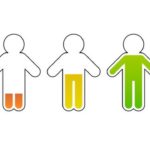
Reading is the one thing I do with any regularity. Whether it is my measured 25 minutes each morning, incessant listening as I piece together a puzzle, or the occasional all day binge on the weekend, there is a book in my hand at some point every day. Consequently, when I determined to revitalize and re-shape this space, I knew I wanted to create a review feature. Not posting here regularly last year as I read through a mountain of books has one benefit, I always have a pile of material to choose from.
I knew I wanted to write a book review this week. I even knew which book I wanted to review this week, because it remains as vital and useful at this moment as it was when I read it last year. As often happens, however, the universe conspired to bring together disparate elements, putting them in relation until the underlying message and theme becomes undeniable. Now, instead of a fairly straightforward book review, there’s television, and social commentary. The only question remaining is where to start pulling this thread.
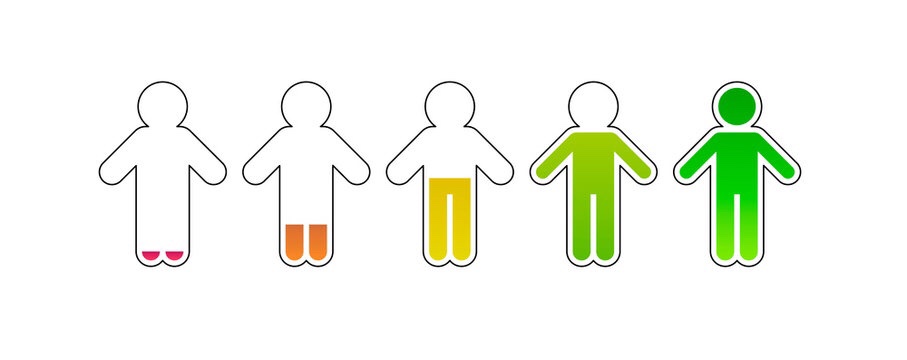
Energy is a great place to start. Last week, for reasons I couldn’t really explain, I ended nearly every day feeling like the figure on the far left. I was exhausted. In fact, on Monday night, I was in bed by 8:30pm and asleep before 9:00pm. The depletion of energy I felt by the end of the day felt inexplicable, because I was generally eating well, sleeping well, and would wake up feeling in the green. If I wasn’t completely charged like the image on the far right, I was pretty close. And, while I had work to do each day, there was nothing overtly stressful happening. I completed my daily task lists, without anything looming incomplete over me. Even the weather cooperated by providing a lovely bit of sun and warm weather to re-charge the world after our grim week of snow and ice. My exhaustion at the end of each day felt bewildering.
My week-night pandemic ritual has become nearly as well defined as my morning contemplations (dinner on the couch with 30 minutes of local news followed by The News Hour). Yet, this week I couldn’t do it. I couldn’t take in the news any more. Yet, I didn’t have the energy to do anything but sit in front of the television. Fortunately, Dr. Revolution chimed in at just the right time to convince me to finally start Bridgerton.
I’m late enough to this game that I don’t feel like I need to recap the standard fare about this show. If you haven’t heard about the intimacy coordinators required to make this show, or seen Regé-Jean Page on Saturday Night Live, the details are covered incessantly elsewhere. While I will admit the eye candy is lovely and the underlying romance swoon-worthy, this technicolor ode to Austen and Regency scandal sheets makes its way onto the blog for other reasons this week. I will elucidate below. For now, what I will say is that if you need a retreat from the world there are worse places to go than 1813 London.
Bridgerton follows the coming out season for Daphne Bridgerton, the eldest daughter of a Viscount. In this season a pseudonymous author Mrs. Whistledown begins publishing a gossip sheet detailing the events of the season. Daphne’s father has passed away, leaving his eldest son Anthony in charge of the family estate and Daphne’s courtship. As in often the case in such stories, Anthony is chaffing under the strain of his new responsibilities. Don’t worry, there are no spoilers here and I will not begiving you the entire plot run down. You only need the set up to understand that as Anthony attempts to exert his new authority as Viscount by making a match for Daphne he fails to consult her, and routinely dismisses her desires. Daphne often asks him something to the effect of, “Is it because I am a woman that you do not think me capable of knowing my own mind or understanding my own experience?” The question of a woman’s ability to determine her own desires, her own life, and to shape the world around her runs throughout the show underscoring many different plotlines. As does the way the men of the show continually fail to see women as fully developed people, not just as their role in society or function as an accessory to a man’s life.
Perhaps it is because I’d immersed myself in Bridgerton, that I started paying attention to just how many women are still forced to ask the same questions. Let me provide just one category of example, women’s health. Just this week, yet another friend shared with me the story of how complicated her relationship with her body and her health are, because she has consistently had to convince medical doctors to take her concerns seriously, to believe her description of her experiences, to treat her symptoms not her weight. She described how it has taken her so long to feel an ownership over her body and her health, after doctors – instead of treating her – asked her if she was faking her symptoms. I don’t know a woman without a similar story. If it isn’t an overt questioning of symptoms, “Are you faking it?” Ask a woman how many times the intensity of her pain has been questioned? How many times has she been treated like addict for asking for relief from that pain. My point is that women still, in so many ways, have to constantly prove the validity of their own experience.
The book, books really, I recommend today start from this point and explore the causes and costs of how women must navigate the world. Emily and Amelia Nagoski’s book Burnout: the secret to unlocking the stress cycle focuses entirely on women by identifying the elements that make life stressful for contemporary women and then providing a way for women to better manage that those stressors. The functional tips the Nagoski’s provide for dealing with stress are useful to everyone. Their discussion of the societal pressures creating stress creates a place where women can see themselves and their experiences taken seriously. The book becomes an expansive breath that reminds us that we are not alone.
To help frame their discussion of the societal pressures that create different stressors for women, the Nagoski’s rely on Dr. Kate Manne’s book Down Girl: the Logic of Misogyny. They identify Dr. Manne’s concept of Human Giver Syndrome as a significant stressor in women’s lives. If I did not overtly recommend Dr. Manne’s book a couple of years ago when I first read it, let me do so now. Dr. Manne is a philospher. Consequently the opening chapter or two of the book, where she situates herself within the philosophical tradition are dense. However, the following chapters where she lays out Human Giver Syndrome and her discussion of misogyny are brilliant.
Within this pandemic, we are all being asked to give more than what we are able to currently receive. And, we are all being asked to do this differently depending on our race, gender, our socioeconomic status, and all the intersections of those elements in our lives. Burnout and Down Girl describe what it means to be a woman in this world. Yes, they were written pre-pandemic, but their lessons are still relevant. Down Girl helps us to name, see, and understand women’s experience in the world. Burnout provides us actionable practices to recuperate from our experiences in the world. Of all the books I read last year and could have chosen to review right now, I chose Burnout, because it is so helpful. If you don’t want to read the whole book, Brené Brown interviews Emily and Amelia Nagoski in the first season of her Unlocking Us podcast. It is a remarkable conversation that brought me to tears at least twice.
After this week, I understand why my energy is depleted so quickly, and in writing this review, I am reminded that I know what to do to replenish myself.
Don’t call it a book club!
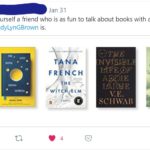
Last year, for the first time ever, I kept a list of all the books I read. As I made the list I decided ‘read’ included listened to, but I only included new books I listened to, not those I re-listened to as I waited for my Audible credits. The number of “new” books I read and listened too was 62, if I remember correctly. No one needs to know what that number would have been if I counted the re-listens.
Yes, yes, I know there are other options than Audible, and they are likely cheaper. But, listen, Audible is a known quantity for me. I know what day I get my credits. I know which narrators I love, which narrators I can tolerate, and which narrators to avoid. And, they recently started giving members access to a lot of free content each month. Sure, sometimes what I find there is trash, but sometimes it is exactly the trash I need. Am I happy that Amazon bought out Audible a few years ago? No. But, I assuage my guilt about giving Jeff Bezos money in other ways.
In addition to reading A LOT last year — which really didn’t feel like reading that much, last year was the year of crazy birthday presents that did not come on my birthday. Yes, there are multiple stories to tell about this; no, I cannot say when you will get them all. If y’all know anything about this space, it’s that I write about what I want when I feel like it. (Though, I intend to be more regular about posts this year.)
I believe was toward the end of September when my friend, Northwoods Renaissance Woman, sent me a message asking what I would ask, if I could ask Tana French anything. NRW earns her moniker because she takes amazing photographs, has her own radio show, and is in all ways cooler than any of us. For her radio show, she frequently interviews authors with new books coming out, and in the last year has snagged some impressive interviews. Of course, the Tana French interview was the most impressive for me. I gave her my question, and then waited rather impatiently for the interview and French’s new book to come out. Once the interview was complete, NRW sent me a five minute clip of French answering my question! I listened immediately, at work so I couldn’t actually squeal like a teenage girl, but that was exactly my reaction, especially when French answered the question exactly as I would have!
As soon as her new book The Searcher came out, I used the audible credit I’d saved for this moment, and downloaded the book. I binge listened to it over that weekend as I worked on a jigsaw puzzle. NRW had told me she was really interested in hearing what I thought of the book, so when I was done I texted her and we set up a quick video chat to talk about the book.
A few weeks later NRW tweeted about a VE Schwab book I didn’t realized had already come out. I mentioned how excited I was to read it, and NWR told me to let her know when I finished it. Once again, when I’d finished we set up an impromptu video chat to talk about our reactions to the story. We also talked about how much we enjoyed getting together to talk about books we read in common.

One of the things we both said we loved about it is that we do not have a book club. There is no deadline, no standard meeting, no agenda for the type of book we are reading, no special questions. We pick a book to read and once we’re both done, set up a chat. It’s been great, and we’ve picked some solid books, as you can see in NRW’s recent tweet, after our discussion of The Lost Book of Adana Moreau.
The Lost Book of Adana Moreau is an amazing book, particularly the first two-thirds. I was only a 1/4 of the way through when I texted NRW to say that this book made me feel like I was back in grad school. I know, I know that doesn’t always signify a good thing, but in this case it does. The book is such an interesting exploration of our identities and connections to one another. Even when it feels like the author takes a few too many side roads, you can see why the author is doing it. As I read I knew exactly which class and which professor I thought should teach this book. I even thought about emailing him to recommend it.
NRW and I are continuing our ‘not-a-book-club’ read along, and no you can’t join, because there is nothing to join. We are just two women, who get together to talk about books. Periodically, I’ll tell you when we find a gem like The Lost Book of Adana Moreau, or the other one we truly enjoyed The Invisible Life of Addie LaRue.
The number of the day …

233 – the day of the year. (It’s a leap year, so there are 133 days left.)
158 – the number of days since I started teleworking and social distancing from people. (I visited three friends in Raleigh in July, and have been on a socially distanced walk with a friend.)
23 – the number of says I walked one extra mile on my “new to me” treadmill in June.

25 – the number of days in a row I have done yoga.
13 – the number of days until I turn 47.
1308 – the number of days the current president, a known sexual predator, has been in office.
Counting days. It is what I do now. Counting days, counting blessings, counting time, counting infections, counting deaths (174,178) until the numbers no longer register.
The counting started with my social distancing (SD#) that I keep in my journal. It was a way to build in reflection, to monitor change. I read enough fiction and non-fiction to have known from the beginning that this would be on-going, and that it would lead to change. I wanted a way to reflect about the way the social changes, changed me. Yeah, I know. It all sounds pretty bleak. It is and it isn’t. I am very well aware of the good in my life. One change, however, is that I do not use the good to hide from the difficult, challenging, and sometimes bleak, truth. As challenging as it is, I would also argue it is a good change.
How else has this time changed me? I don’t have that answer yet. I am here in the middle of it, counting days and trying to hold space. Trying to breathe in the tension between the blessings and joy in my life and the reality of the world around me.
Today I learned that 1448 days ago on September 2nd, 2016, as I celebrated my birthday, and unknown to me Judge Paul Benshoof used his signature to grant me a divorce, Chanel Miller had to watch Brock Turner be released from jail. I’ve been listening to Know My Name. It’s taken me a while, because I can only listen to so much at once. It’s taken me a while, because it is so powerful, moving, heartbreaking, and beautiful. It is out in paperback this week, and I encourage you to get it. I’m sad to know such a thing happened on my birthday; but, frankly, 2016 was my personal 2020, so I am also not surprised. I am angry as I listen that more has not changed. This year, on my birthday, I want only good to happen for Chanel Miller and all the survivors of sexual assault and sexual aggression in the world. We deserve it.

Unexpected Joy
![They Can't Kill Us Until They Kill Us by [Abdurraqib, Hanif] Book cover. Blue background, picture of wolf head and chest on a man's body wearing a red track suit with white strips down the shoulders and arms, and a thick gold chain around its neck.](http://grabow.co/wp-content/uploads/2020/02/TCKUUTKU-150x150.jpg)
Sometime last fall, in the space between knowing my life would change and that change beginning, I started to read Hanif Abdurraqib’s They Can’t Kill Us Until They Kill Us. Ouiser’s recommendations never steer me wrong. You can trust them as well. I savored this collection of essays. Reading for a few days in a row before turning to another book as the mood struck me, but always returning to dip back into the space and sound of the writing. Abdurraqib writes about a wide variety of music, by weaving his story into the experience of listing or attending a concert. He uses those stories to reveal the contemporary moment in a way that made me pay closer attention to the music filling my world. Everyone should buy the book, even if you only read “A Night in Bruce Springsteen’s America.”
![They Can't Kill Us Until They Kill Us by [Abdurraqib, Hanif] Book cover. Blue background, picture of wolf head and chest on a man's body wearing a red track suit with white strips down the shoulders and arms, and a thick gold chain around its neck.](https://images-na.ssl-images-amazon.com/images/I/51D8sJcFPRL.jpg)
There are so many tools that are made for my hands.
But the tide smashes all my best laid plans to sand.
Neko Case – Night Still Comes
In the final pages of the book, Abdurraqib elegizes 2016. A year that many of us individually, and as a nation, struggled to survive. To think about what happened in the country in 2016, I have to carefully untangle each event – each death, each killing, each mass shooting – from the death of my marriage. For me, 2016 is an endless coordination, getting my ex-husband to help, alerting his family, talking with doctors, finding someone to care for the animals as I constantly drove from Bemidji to Fargo and back each Saturday from January – March, bringing him home, returning him to another hospital, and starting the cycle over. Navigating 2016 took every tool at my disposal, and, at every turn, each plan I made smashed against the reality that my marriage was over.
Abdurraqib’s elegy for 2016 takes a different approach. Describing his response to the horrific Pulse nightclub shootings in Orlando, Abdurraqib recounts how the sounds of children riding their bikes reminds him that it is in the small moments of joy that we regain our strength to return to the fight.
And, as I think about 2016, I remember the phone calls. Long talks with friends and family full of tears and laughter. I remember the unexpected care packages. I remember the happy hours spent eating fried foods and deepening new friendships. I remember learning to accept the help offered. And, I realize how each of these moments renewed my strength. The cleansing tears shed with friends. The laughter at a macabe joke, because … what else can you do? The warmth brought by a smile and an invitation to lunch. The joy – large and small – made it possible for me to make it through the night I feared for my safety, for me to pick up the pieces as each plan failed, for me to know without a doubt when it was time to let go.
I do it for the joy it brings
Ani DiFranco ~ Joyful Girl
‘Cause I’m a joyful girl
‘Cause the world owes me nothing
And we owe each other the world
Abdurraqib concludes, “Joy, in this way, can be a weapon–that which carries us forward when we have been beaten back for days, or moths, or years.” And I remember how beaten down I felt in the years leading up to 2016. How alone I felt trudging from one crisis to the next just trying desperately to hold it together, to make sure I could provide for my family. Yes, there were moments of joy in those years, friendships made, but I remember how my smile rarely reached my eyes, and my guard never fully came down. In 2016, joy became my weapon. It carried me forward each time an event beat me down. Joy also became the weapon of my recovery. It flooded my life in the fall of 2016: the house full of friends at the birthday party I threw for myself, the renewal of old friendships, the long mornings and afternoons on the deck, the comfort of the dogs and cat as we settled into our new normal. The joy in those moments, big and small, salving my wounds, healing me, and carrying me forward.
Reading Series: The Freelance Academic

Getting an advance readers copy (ARC) of a book invariably involves knowing someone and a promise to write a review of the book. You might know someone at the publisher, or have a friend who knows someone. At any rate you know someone who knows you have an interest in the genre or subject matter, and that you could provide a review. Yes, I am dorky enough that I love the way getting an ARC makes me feel like an insider. With this ARC, I have the additional privilege of knowing the author. Having met Katie Rose Guest Pryal in graduate school, not only have I had the privilege of calling her a friend, I have known her during many of the events in this book.
For the first time, knowing the author whose ARC I’m reading, considering her a friend, made writing this review difficult. I finished The Freelance Academic, a couple of weeks ago. Sure, some of my delay posting stems from scheduling. Mostly, however, the delay comes from how much I want you all to read this book. As I struggled to develop my thoughts about why I want everyone to read this book and what I could say without giving too much away, I decided the best way to get started was with transparency. Yes, my friend wrote this book and I am about to write a very positive review about it; however, what I need for you to fully understand is that those two things are not dependent upon one another.
In Brittney Cooper’s book Eloquent Rage, she describes a home-girl intervention, as an instance when a friend firmly, but lovingly calls us on some bullshit and educates us in a way that makes us better. Cooper tells the story of a friend from her undergraduate days, who called her on her dismissal of feminism and got her to engage with bell hooks. Cooper’s engagement with hooks and feminism is clearly a defining moment for her. Cooper’s friend’s willingness to stand up to and educate her came at just the right time to shape Cooper’s thinking and career. The home-girl intervention isn’t always what we want to hear, but it is what we need to hear. It requires a friend brave enough to be blunt with us.
In The Freelance Academic, Guest Pryal steps up to do the same work for readers. There are many blog posts, websites, articles, and books out there about the state of the academic job market, reasons to leave academia, how to find work outside of academia, and a lot of what has been dubbed “quit lit” about how individual people have navigated this transition. Understandably, many of these narratives illustrate the problem with academia which has caused the person to leave, then describe the fulfilling and rewarding life leaving academia allowed the person to build. Skimming the messy, difficult time between leaving academia and getting to that fulfilling and rewarding life is understandable because those periods are often so personal, so influenced by the details of our lives that authors can be forgiven for not sharing what they may not realize could be helpful to others.
Drawing on personal experience and biography, The Freelance Academic fills in this gap. Using the details of her own story, Guest Pryal offers valuable insight and practical advice on how she has built a freelance career outside of the academy. The result is something special. By acknowledging the details of her story that enabled her to follow this path, Guest Pryal opens the door for readers to flexibly engage with her advice. For those in situations similar to her own, The Freelance Academic becomes great guide for building a freelance career. For those of us still working in academia or in different situations, The Freelance Academic still provides an amazing amount of value. It is, in the best sense, a home-girl intervention. Guest Pryal unflinchingly calls out and lays bare the conditions in which we work, and then she educates us, provides us with new way to think about the way we work and who and what we are working for. There isn’t much more I can say without spoilers. Whether you are currently in academia, considering leaving, or have just left, The Freelance Academic comes at just the right time to re-frame how you think about your work and the path you want to take.
Reading, Rage, and Community

Recently, one of my favorite writer’s tweeted about reading Rebecca Traister’s Good and Mad: The Revolutionary Power of Women’s Anger for an upcoming column she is writing. At the time, I was in the middle of Soraya Chemaly’s Rage Becomes Her: The Power of Women’s Anger. I suggested we should compare notes. Traister’s book is next on my list of books to read this year, but since I currently have three other books in progress, in will definitely be 2019 before I get to it.
Just before the conclusion of her book Chemaly advocates for a type of anger competency to replace the idea of anger management. She gives suggestions for how to be aware of our anger and to manage it. Number seven in her list of suggestions “Cultivate Communities and Accountability” struck me. The section opens, “Anger can feel very isolating, but, in fact, it is an emotion that demands communication and conversation. It also finds strength in community.” While the section goes on to discuss protest communities, I found myself thinking of a different community. This year in articles, essays, columns, and whole books, I have been immersed in discussions of women’s anger.
Though I could probably trace this to other texts, the first piece on anger to really stand out and shape my thought was Lyz Lenz’s essay “All the Angry Women” in Roxane Gay’s collection Not That Bad: Dispatches from Rape Culture. Describing the Bible study group she leads each week, Lenz says she meets each week with angry women and describes the sessions as a type of group therapy. A place where the women can come and hold their anger in community. Lenz identifies the way for so many women, myself included, “anger is always reserved for someone else.” Someone else always has a greater right to be angry and, therefore, I should not. It echoes the theme of the whole collection — the way the fact that someone else has experienced worse can make us feel like we do not have the right to hurt, or feel anger, or to demand justice.
In what has been the most personally revelatory passage I read all year, Lenz writes: “Anger is the privilege of the truly broken, and yet, I’ve never met a woman who was broken enough that she allowed herself to be angry.” I read this passage at a time when my counselor was trying to get me to express my anger about my marriage. Yes. My marriage broke me. Yes. My marriage gave me many reasons to be angry. But, no … I was never broken enough to allow myself that anger. I still can’t or don’t. More and more I notice that I really only allow myself anger for others, never myself.
Chemaly tells us we need community and accountability to improve our anger competency. Lenz describes the communities of angry women in her weekly Bible study. Brittney Cooper’s book Eloquent Rage: A Black Feminist Discovers Her Superpower, which I also read this year, addresses anger as well, but the primary focus is the other theme dominating my reading this year — women’s friendships. As Lenz’s writing provides the cornerstone of my reading of women’s anger, Cooper is the cornerstone of friendships for me. Filled with cultural insight and commentary, her book is a love story, an ode to her friendships. Maybe not everyone has read the book this way, but the message is there throughout: our friends intervene when we need to be set straight; they hold us up when we stumble; they champion us as we fight; and they celebrate our successes.
One of the final books I will read this year is Kaylee Shaefer’s Text Me When You Get Home: The Evolution and Triumph of Modern Female Friendship. The connection isn’t fully formed, but I am struck by how these themes anger, community, and friendship enveloped this year. Perhaps, the idea I’m reaching for is that circling behind it all in subtitles and inferences is the idea of power. Individually we each hold power, but when bound together into communities, bound together by our anger for others and ourselves, that power multiplies. Power energizes and it buoys. Our friendships generate it and our anger focuses and wields it. Perhaps that is is why at the end of a year of reading about women’s anger, I feel so hopeful.
On Roxane Gay and learning to be bad …

Bad Feminist by Roxane Gay had been lurking around my consciousness for a while – something I knew I should read, and should want to read, but couldn’t really find the energy for. On some level, I expected to see too much of myself called out in the book. I expected too much finger pointing about the ways I am not committed enough to the movement. As someone who tries her best to do the hard work, to look for the gaps in her thinking, to own and learn from her mistakes, and to make sure her feminism is intersectional and inclusive, I worried that Bad Feminism would be about the failings of White feminism, which as a a white woman always implicates me. I couldn’t face the thought of an entire book about how I’m doing it all wrong.
Then, I watched Roxane Gay’s TED talk. Then, I went home followed her on twitter, and put Bad Feminist on my Kindle to start reading. I saw myself in nearly every chapter, and not in the way I expected. Our experiences are fundamentally different, but the places of connection were so strong for me: the early resistance to feminism, the tension between the popular culture we consume and the intellectual values we hold, the commentary and critique of film, television, and current events I wished I’d written, the escape into books (Trixie Belden was my Sweet Valley High). By the time I got to “Typical First Year Professor,” I was in tears. This semester, man, I can’t even describe it, but if you really want to know what the last few months have been like read that chapter. I shot an email to Ouiser, who of course had already read the book, and her first response back was something about how that chapter made her think of me.
Don’t worry, I’m not trying to put Gay on the Feminist Pedestal she decries, nor do I mean to overwrite her stories with my own. It has, however, been far too long since I read a book that energized and moved me in the way this one did. Bad Feminist makes me think about the other aspects of myself where I feel a tension between who I am and what I think the requirements for that label are. In the introduction Gay says:
“I openly embrace the label of bad feminist. I do so because I am flawed and human. I am not terribly well versed in feminist history. I am not as well read in key feminist texts as I would like to be. I have certain … interests and personality traits and opinions that may not fall in line with mainstream feminism, but I am still a feminist. I cannot tell you how freeing it has been to accept this about myself.”
Though I hadn’t labeled it as bad feminism, I also have made peace with the differences between mainstream feminism and my own feminist thought. Now I wonder, how else might it be freeing to accept a label of bad ____ in my life. What are the other ways I attempt to define myself, yet feel inadequate when I think about the expectations of the label?
Writer.
I am a bad writer.
Though I don’t put “Writer” on my business cards, it is something that is central to what I do, and I’ve been struggling to claim it as an identity marker. I wrote a dissertation, but am mortified at the thought that anyone has read it. I write academic things, but I don’t ever send them in for publication. I supposedly write this blog, but am lucky to manage one post a month. Don’t tell anyone, but I even have the seeds of some fiction pieces floating around my computer in Scrivener files. I know the rules about writing everyday, about shitty first drafts, and about revision, but I don’t follow them consistently.
As I thought about my goals and set my theme for this year, much of my brainstorming had to do with the ways I needed to be a better writer. I need to submit that article to that journal. I need to write another article for that other journal. I need to post more frequently to this blog. I need to give those fiction seeds some attention to see what grows from them. But, what if all those things I need to do to become a better writer aren’t the goal. What if instead my goal is to embrace the way I am a bad writer? What could accepting that about myself free me from? What would it make me ready for?
Reading Habits
Though I often think about it, I rarely post reviews of what I’m reading here for several reasons. Often what I am reading is something academic, and it is boring enough to read that stuff let alone write reviews of it. Do you really want to hear about Geographies of Writing: Inhabiting Places and Encountering Difference, or Talk about Writing: The Tutoring Strategies of Experienced Writing Center Tutors (both are really good by the way)? How about the fact that I cannot wait to get a copy of Hospitality and Authoring: An Essay for the English Profession? I bet you can wait to hear about that right?
Then there is my Post-Dissertation Stress Disorder (PDSD). No, I am not trying to minimize, or be disrespectful, to anyone suffering from Post-Traumatic Stress Disorder (PTSD) by equating the stress of graduate work to PTSD. I do, however, think that graduate work, and dissertation writing in particular, breaks you down in ways that require significant recovery when it is all over. For me, I have noticed writing is not something I am doing for fun anymore, even when I want to (notice the lack of posts here). Finishing books is also something I’m terrible at right now. Terrible. If I reviewed every book I picked up here, I could line up posts, but since finishing a book is a requirement of reviewing it … you get the idea.
There is an additional element to not finishing. I’ve been trying to read more books electronically. I have a nice Kindle collection going, and I think I’ve truly finished three of them. It is awful. Part of the problem is that they just aren’t visible. There isn’t a pile of books laying around the house guilting me into finishing them. The other problem is that when I do open up my app and read it doesn’t feel like I am getting anywhere. I recently realized I like to see my place in a book progress. It is not just about progress, I like to know how much of a story I have left. Seeing that I am 37 or 42% done with a book doesn’t really help me there.
Despite these failures, I do faithfully finish two books every month, my audiobooks. Though I do sometimes listen to respectable books like, The Invisible Woman by Claire Tomalin, pulp is probably the best way to describe my audible library. There is an embarrassing amount of Dean Koontz, Stephen King, Johnathan Maberry, Jeffery Deaver, Ann Rule, Lisa Gardiner, and Tess Gerritsen in there, not to mention the zombie fiction. My audiobooks are my escape. I listen as I commute to work, cook, clean house, and sometimes walk around the neighborhood. They are a way for me to indulge myself, yet still feel like I have accomplished something.
All of this is to say, this month I read/listened to something I want to talk about. The fact that I love mysteries and detective fiction is no secret. I am always on the look out for a new series to capture me. When I find one I generally listen until I am caught up, and have to wait for the next installment. (Cody McFadyen really needs to get the next Smoky Barrett book out.) This month I tried Elizabeth Heiter’s Hunted (The Profiler). It is the first book in her Evelyn Baine series. The book is good enough for me to stick around with the series, some rocky places, some unanswered questions, like any first book in a series. What is interesting about this book for me is that Evelyn Baine is bi-racial. Okay, it might not sound like much if you don’t read a lot of this genre, but at least what I have been reading lately is a sea of whiteness. Alex Cross is the exception folks, not the rule. Even better, I loved that this detail was just that during this novel. It was a detail, a part of who Baine is certainly a part of what shapes her, but not something that overly determined the plot.
Look, as much as I love imagining myself as Clarice Starling, I don’t just read to see myself. I read to find how and where I can identify across my difference with the protagonists. I want to read, empathize, and learn as much from Ardelia Mapp as I do from Clarice, which is why Evelyn Baine is refreshing, and I am excited to stick with this series.
Under the Dome – Missing Frank
If I remember correctly, when Under the Dome first came out I was working in a bookstore that no longer exists. I’ve never been a big enough King fan to pay for a hard copy of his books (even with employee discount), and as I waited for the soft cover of Under the Dome I got busy with grad school, and it just dropped off my radar. Recently, all the hype about the television show reminded me of the book. I had an audible credit available, so I decided to listen to the book before watching the tv show. From what I have heard, I don’t think I will be wasting my time with the tv show.
There is a new series of Law & Order: UK on BBC America right now. That, plus Hell on Wheels, have all my television time wrapped up. Any extra will be devoted to watching The Fall on Netflix. In short, since I no longer have to worry about a dissertation I now have brain space for good television, which limits my tolerance for bad television. Really, I haven’t watched a single episode of Rizzoli & Isles this season. Posts about each of those shows will probably follow, but this one is about a book.
My feelings about Under the Dome could be summed up like this … eh.
The book certainly isn’t King’s worst, but I wouldn’t rank it among his best either. Even if you limit your best of list to King’s epic door-stopper genre, Under the Dome is just there, not fantastic, but not bad enough to really complain about either. Once you meet all the characters, which takes a good portion of time, the rest of the story is fairly predictable.
In all fairness, however, I have to admit Under the Dome had a hard row to hoe. Because I didn’t really read it, I listened to it and, while the narrator was passable, he was no Frank Muller. Muller was the first audiobook narrator that made me pay attention to his name, and then go find other things he read. I can’t tell you any more which came first, my decision to listen to/read Stephen King & Peter Straub’s Black House, or my love of Mr. Muller’s voice. Muller’s voice and characterization are the standard by which I judge all other narrators, and while many get close, few make me want to listen and re-listen to books the way Muller does. At one time I actually owned Black House on cassette, and when I lost one, I used an Audible credit to download it. Even having paid for it twice, I have gotten more than my money’s worth from Muller’s recording. Seriously, go check out Muller’s narration list. I guarantee you will find something you like on there.
Black House is not such a great story that I want to listen to it over and over, it is that Muller makes me love the characters, makes me ignore the faults in the story. Under the Dome’s narrator is fine. He does an okay job, but he is never quite able to make me love the character’s enough to forgive the plot twists I could see coming/the canned story arcs/or King’s obligatory unnecessary sex scene. All of this is just my long way of repeating my initial review — Under the Dome, eh.



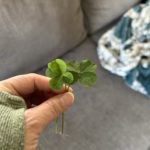


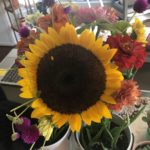


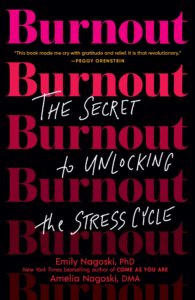

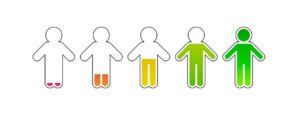
 D5 Creation
D5 Creation